What do I see in the next five to 10 years for the energy industry? Stress. In particular, I see stress on the regional grid that we all rely on for power. This grid is called the Midcontinent Independent System Operator (MISO).
MISO is a not-for-profit, member-based organization established to ensure reliable, least-cost delivery of electricity across all or parts of 15 American states (including Michigan) and one Canadian province. In partnership with utility stakeholders, MISO manages approximately 65,000 miles of high-voltage transmission and 200,000 megawatts of power-generating resources across its footprint.
A maximum generation or “max-gen” event on the MISO grid means that the regional operator is calling on every available generator, regardless of fuel type, to run (even antiquated but functioning diesel peaking units). They also call on utilities to cancel or delay maintenance that would take a generator offline during a max-gen event. In short, it is all-hands-on-deck to meet the energy demands of the day.
In the 10 years prior to the spring of 2016, MISO declared six max-gen events. Since that time, there have been 15 max-gen events. What does this mean? It means we are losing generation faster than we are building it. While we have celebrated coal plant closures and clamored for the end of nuclear energy, we have not been building any alternatives on a scale to keep up.
You don’t have to look any farther than the state of Michigan to realize that the numbers will eventually catch up to us. Wind farms are getting killed by townships. Planning commissions are delaying large-scale solar installations. Energy conservation efforts will continue and maybe even increase, but they will not replace the 6,000 megawatts of Michigan coal plants slated to close in the next five years.
What is the solution? It’s building large-scale installations of wind, solar and natural gas. Coal is too dirty. People are too frightened of nuclear. Hydro is simply impossible to construct due to environmental complaints. Opposition to large-scale wind and solar leaves us with one sure thing in the next 10 years: gas. You will see lots and lots of gas turbines installed across Michigan and the MISO grid.
Aren’t large utilities dedicated to taking us to a wonderful renewable future? All those laudable goals are in the year 2040 and beyond. I’m focused on 2024 and 2029. Feel-good rhetoric will not solve our near-term simple math.
Shouldn’t the parades, rallies and carbon-tax initiatives save the world? We have one almost every week, but none of them address the simple math problem. Instead of railing about the woes of the planet, the time spent on these events should be put towards solving planning, zoning and siting roadblocks.
Please don’t write to me about belittling the efforts of climate advocates. Instead, write to me with legal and legislative solutions that clear the path for the actual installation of the needed clean or cleaner energy projects. If we can all agree on the root problem, why are we having so much trouble working on real-life solutions?
Don’t lose sleep over the seeming doom and gloom of this column. We have an easy solution, and I expect MISO to take it when the day comes. What is it? Simple math. We will run old coal and nuclear plants longer. To meet the demands of the next max-gen event, the stalwarts of today’s energy fleet will continue to operate. If we don’t build new (and we aren’t), the old will have to continue production. That’s the new max-gen math.



Climate advocates have been on board looking for alternatives to coal for decades. You, Tony, have been belittling the looming problem and their efforts for decades. Where were you then? You, Tony, are a big part of the problem that you describe of soon not being able to meet energy needs. “Blame the messenger” is what I see in your diatribes.
It isn’t about advocating about alternatives for decades. Climate advocates need to get on board with the hard work of planning, zoning and siting large scale wind and solar. In Michigan, they are getting beat by the anti wind movement. This is a fact and not a diatribe of any kind.
Write an article about wind power in Iowa, NB, TX. Compare it to MI and include the economic and environmental impact.
I am only a customer who wants my grandkids and great grandkids and beyond to enjoy what we have. Can we all please stop pointing fingers and name calling and come together. We have a serious problem and we need to solve it. If it means giving up some empty fields for energy farms then let’s do it. When someone changes his beliefs and takes a stand that will solve the problem why do we feel it necessary to belittle him. We should be applauding him and be thankful he has finally seen it “your” way. PLEASE for all our future families let’s stop talking and start building.
Thanks Tony for having the guts to tell the truth. Climate change is real and there is no doubt that mankind contributes to it but to the what degree is totally unknown and is unknowable. All these foolish climate changer people are ready to jump off any bridge to save the plant or so they think they are saving the plant. The reality is that if the United States were to somehow stop generating 100% of its green house gas emissions tomorrow forever, that event alone would not stop climate change from occurring – in fact it would not even change the temperature rise by 0.1 degrees. That is the math – simple math….
Wake up people and stop listening to political fools who nothing of the simple math.
Why not encourage home owners to add solar or wind systems to thier homes. You can do that by reversing the recently added fees to doing it. Many small things can turn into big things.
There is also new technology for small scale nuclear power plants. They are much cheaper and can be shut down when not needed.
A person in your position has much more influence than a home owner to get things done. But if you can’t maybe I should consider a non grid tied solar system in the next 10 years.
Though to be responsible we must always be working toward identifying workable, reasonable energy alternatives. Yes. However, “While we have celebrated coal plant closures and clamored for the end of nuclear energy, we have not been building any alternatives on a scale to keep up”. is in my mind irresponsible and erroneous. Who is doing all the celebrating. Closing down much needed energy sources that eliminate income for families and fuel for our nation, before it is truly time is unconscienable. Speak for yourself. And, I don’t know of any “anti-wind” movement, just those who are aware of the enormity of the initial investments, the repair rates and the number of years to reap the return. PERSPECTIVE is needed.
small nuclear plants are the way to go. Folks need to be educated as to their efficacy and safety. It’s foolish to comment on past problems when technology has taken quantum leaps forward.
Tony, I’m a bit surprised you would write a column citing “Max-Gen” limitations by calling for additional wind and solar as a cornerstone solution. Even a casual observer would note that wind and solar cannot be depended upon in a Max-Gen event without spending billions on environmentally-idiotic large scale battery installations, which you fail to include. Lacking that, the amount of solar and wind that can be included on a stable grid (including Max-Gen needs) is surprisingly low.
My intent was to call for action that involves building all forms of generation. I also intended to make people aware that if we don’t build a balanced portfolio, we will build one heavily tilted towards natural gas as that is currently the path of least reistance. Finally, the third intent was to let people know that if coal plants are required to operate past their useful life that there is a clear reason – building new generation did not keep up with retiring generation and there was no conspiracy to keep “dirty coal” operating. Rather than a conspiracy, there will be a clear necessity if that happens in the future. This is what some need to open their eyes to.
Tony, you posted an excellent article August 27, 2018 titled “Can Small be Big?. In light of this recent post, which I also found an excellent article, maybe it’s time to repost “Can Small Be Big?” as it fits perfectly with the discussion at hand. Possibly the two articles together will get folks thinking in a more positive direction. I believe there are responsible answers in sight. We all just have to work together and to take the right course of action. You have gotten that ball rolling with the aforementioned articles. Thank you!!
Thank you!